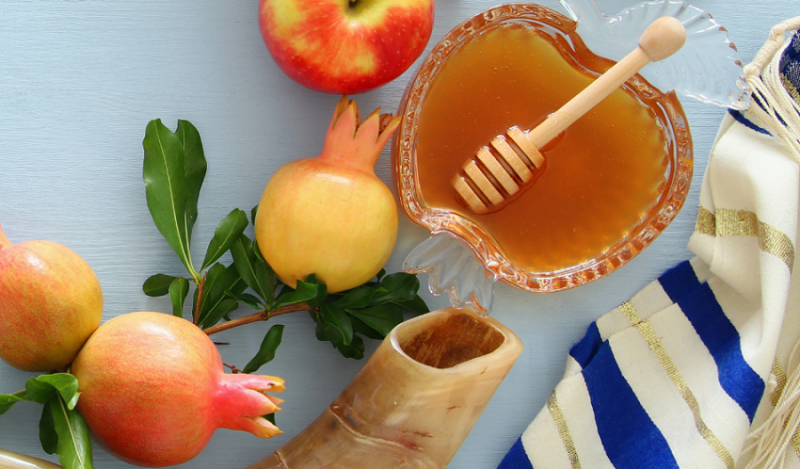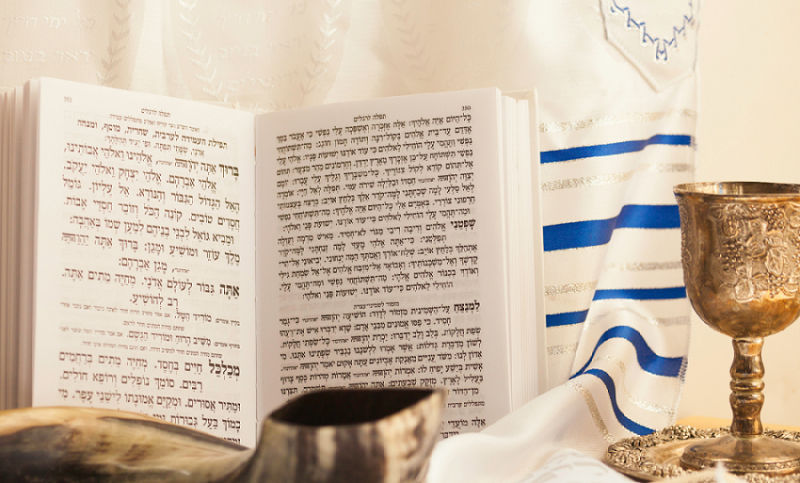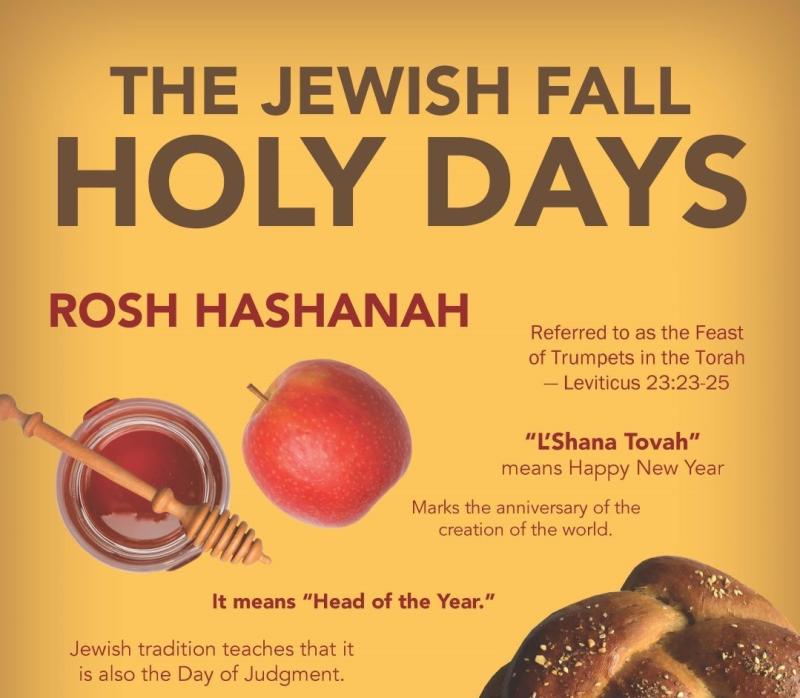Rosh Hashanah | Yom Teruah
Jewish New Year | Feast of Trumpets

Description
Rosh Hashanah is the Jewish New Year celebrated together with the Jewish Feast of Trumpets.
Date
Begins at sunset September 22, 2025
Ends at sunset September 24, 2025
About Rosh Hashanah & Yom Teruah
10 Things to Know
About Rosh Hashanah

1. Rosh Hashanah means “head of the year” in Hebrew. The holiday occurs on the first day of the Hebrew month of Tishrei and is commonly referred to as the Jewish New Year. Tishrei falls in September or October.
2. Jewish tradition teaches that God created the Earth on the same date as the biblical Feast of Trumpets, or Yom Teruah. For this reason, Rosh Hashanah and the Feast of Trumpets are observed together.
3. Yom Teruah means “day of blowing,” and part of God’s instructions to Israel involves trumpet blowing. Today, Jewish people celebrate Creation and the start of a new year in synagogue services that include special liturgy, prayers and blessings along with 100 blasts of the shofar, the trumpet of the Bible made from a ram’s horn.
4. Rosh Hashanah ushers in the High Holy Days of the Jewish calendar. The Rabbis teach that at Rosh Hashanah, God pronounces a judgment for the coming year upon each of His people. On the Day of Atonement (Yom Kippur in Hebrew), He seals that judgment. The 10 days between these holy days are known as the Days of Awe. According to Jewish tradition, during this time, God may yet alter what was to be an unfavorable decree and grant a good new year. Therefore, Rosh Hashanah begins a time of intense reflection on one’s life and repentance before God in preparation for Yom Kippur.
5. A traditional holiday greeting for Rosh Hashanah is Shanah Tovah Umetukah, which means “A good and sweet year!” This is sometimes shortened to simply L’shana Tovah!, meaning “For a good year!”
What is Rosh Hashanah?
Learn about Rosh Hashanah – the Jewish New Year – its customs, traditions and spiritual meaning. Discover traditional Rosh Hashanah foods, the meaning of the shofar, how Jewish believers in Jesus (Yeshua) celebrate Rosh Hashanah.
6. Rosh Hashanah is a rest day, in which God forbids all regular work.
7. Rosh Hashanah has come to be celebrated on two days. With a calendar system that changed months based on the lunar cycle, the first of a new month wasn’t known until the new moon sighting was reported. A month could have 29 or 30 days, depending on the new moon to signal the start of the next month. Reports could take well into what was supposed to be a rest day. Jewish people in the Diaspora took much longer to learn of the new month’s arrival. So, the religious leaders declared both the day of waiting for the report and the following day as sanctified for observing the holy day.
8. Challah is the special, braided bread of Shabbat. Typically, challah bread is braided in a traditional loaf shape. On Rosh Hashanah, we shape the braided dough into a round loaf to symbolize the cyclical nature of one year leading into another. Some also consider it symbolic of a crown, highlighting our commitment to crown the Lord as King of our lives.
9. The most traditional food associated with Rosh Hashanah is honey. The sweetness symbolizes the hope of a sweet new year. Apples dipped in honey and honey cakes are customary treats.
10. Messianic Jewish Believers celebrate Rosh Hashanah/Yom Teruah with an additional spiritual element in mind. Like the other Feasts God commanded of Israel, Yom Teruah contains a prophetic picture of what God would do in the future as His redemptive plan unfolded through the Messiah, Jesus. The Bible says little about Yom Teruah. Yet, with the emphasis on blowing the shofar, we can easily see an End-Time correlation to the prophesied last trumpet (1 Corinthians 15:51–52). Yom Teruah is often associated with the initiation of the Messianic Age and the resurrection of the dead in Messiah.
Get the Jewish Fall Feasts Infographic
Have you ever wanted to learn more about the Jewish Fall Feasts? Jewish Voice Ministries has put together this informative infographic where you can discover the fascinating history and meaning of the holiday.















